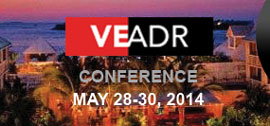VEADR 2012: Where are we going with Construction Defect Litigation?
LiMa Solutions VEADR 2012 Construction Defect Symposium, Key West, Florida
The conference opened with Larry Kent and Gary Baumann offering passionate pleas to the partially hungover, yet not fully sunburnt crowd, to keep an open mind. Why? The theme of this seminar is about re-thinking the ways in which we handle construction defect claims.
Most importantly, we need to collectively respond to the new economic realities and learn how to resolve claims better, faster and cheaper.
It is broke, and it ain’t getting fixed.
As Ed Martinet noted during his welcome, once again quoting Bob Dylan, “the times they are a-changin’.” Over the last 20 – 30 years there have been incremental changes. For example, the case management order (CMO) process has enabled litigants to establish predictable schedules of key milestones in construction defect claims. But it isn’t (clearly) enough. Instead of one, two, or even three scheduled mediations, many cases are not being resolved until well after a ninth or tenth round of mediation.
As Keith Koeller noted, a typical construction defect matter might easily involve over 600 people. That’s not the number of people named in the case, but the number of people getting paid to work on those cases. Think about that for a moment, while you consider that few of those people are charging less than $100 per hour…
In other words, resolving construction defect claims is very costly, and usually greatly exceeds the actual amount paid to the property owner to supposedly repair defective construction. From another perspective, many of us (myself included) are employed almost exclusively in the construction defect litigation field. That is why so many people are resistant to changing how we do things – it means less revenue, and potentially, lost jobs.
As Baumann so eloquently put it, what we have to do is find ways of resolving these cases more thoughtfully. And as Kent said, it will make our lives better, and it will be better for the clients.
Here are some of the factors that various panelists illustrated that are proving successful:
- With regards to cases subject to Right To Repair laws, individual plaintiffs are better than multiple plaintiff parties. This includes not only individual homeowner plaintiff cases, but also cases where the plaintiff is a homeowner association or commercial property owner. As Dave Stern said, construction defect litigation is the biggest “people business” outside of retail, and working one on one with claimants is much more effective.
- Making sure that plaintiff counsel is paid as part of settlement agreements. This is a biggie, as many plaintiff attorneys work on a contingency fee basis, so if repairs are made, but no cash award is made, the attorney will not receive compensation.
- Using neutral experts to represent all parties. This eliminates the “expert as advocate” role that unfortunately so many experts assume. Even still, as long as experts representing a party maintain a roster of clients that is not exclusively plaintiff or defense, their opinions are much more reasonable and rational.
- Most important: All sides must go into the process with a willingness to settle quickly. Mindset is everything, especially in litigation.
So that’s all I have for now. I need to head down to the docks for a wine tasting followed by a cigar rolling demonstration.


